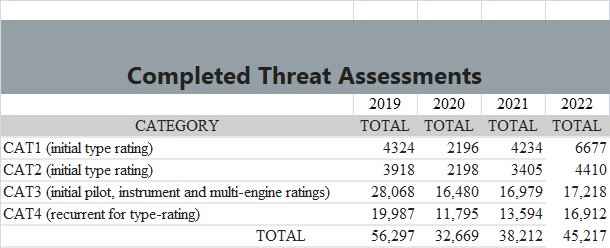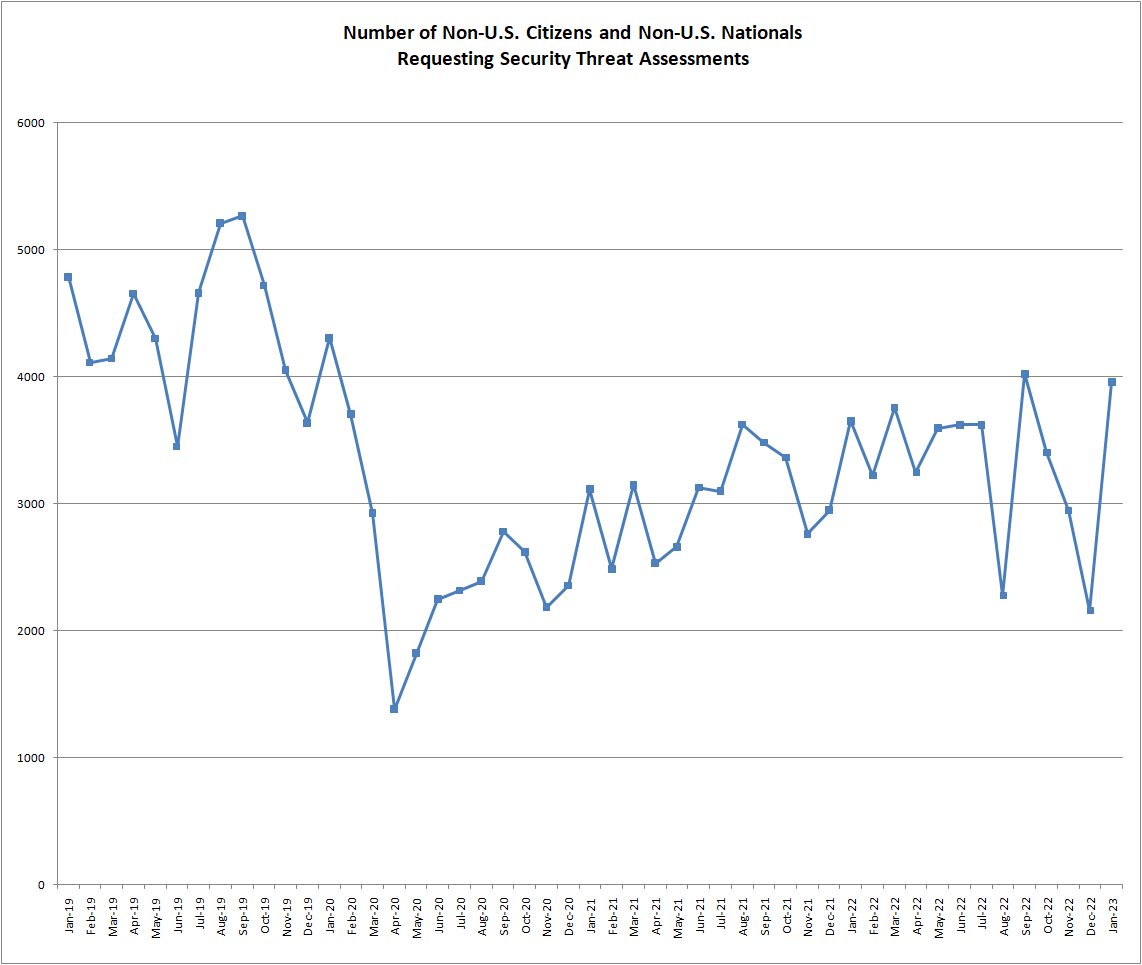The ATP-CTP course pilots complete as they transition from being certificated as a commercial pilot to being employed by airlines is not doing what it was intended to do. In some ways it is serving as a hurdle to the flow of ATP certification, and it might be time to consider an effort to modify the requirements of this course or remove it from the training requirements for ATP certificate issuance.
Background
In 2010, and in a large part in response to the 2009 Colgan Air Flight 3407 crash in Buffalo, legislation was passed that fundamentally changed the qualifications and process of transitioning a pilot from a commercial pilot certificate to an ATP multiengine pilot. This transition was made to enhance the training and experience background of pilots who would be flying cargo and passengers in our commercial airline environment.
House Resolution 5900 then generated Public Law 111-216 (https://www.faa.gov/about/office_org/headquarters_offices/agc/practice_areas/regulations/part117/Part117_General/media/Public%20Law-111-216.pdf) which includes dictates of specific training requirements that would need to be implemented by the FAA in future certification efforts for pilots.
One of the changes included in this effort is the implementation of an ATP-CTP (Airline Transport Pilot Certification Training Program) course as a prerequisite for eligibility to take the FAA ATP knowledge Test.
This course was eventually codified in requirements in 14 CFR 61.156 (https://www.law.cornell.edu/cfr/text/14/61.156). Include in this regulation are requirements to complete “Academic training. The applicant for the knowledge test must receive at least 30 hours of classroom instruction” and a variety of things in this training. Also included in this regulation is are requirements for “FSTD training. The applicant for the knowledge test must receive at least 10 hours of training in a flight simulation training device qualified under part 60 of this chapter that represents a multiengine turbine airplane.”
This is now the basis of the requirements for the ATP-CTP course.
The current state of the ATP-CTP course
Simply put, the course isn’t working. And it is a bottleneck to the throughput of training for pilots transitioning into jobs at airlines. There are other roadblocks in the system to pilot production, but this is one of them.
People are going through the approved courses because they are required to. Airlines are either providing or contracting the provision of these courses for those they hire because it is required, not because it is somehow increasing the skill or knowledge of their pilots.
Reports I get back from people who have gone through these courses are that they are a waste of time.
I hear from people for whom I have provided practical tests that then move on to airline hiring and are put through these courses regularly. It’s pretty cool to see people I test move on in their careers, but it is disheartening to see them be forced to go through courses that are ineffective and are just wasting time and resources in the pilot certification process.
What do I hear specifically about these courses? Let me give a few examples that I want to be clear are not just applicable to one particular course provide:
“The week of ATP-CTP course is a death-by-PowerPoint waste of time.”
“The stuff we covered in my ATP-CTP course ended up having nothing to do with what I do at the airline now that I am a line pilot.”
“My ATP-CTP course really did nothing to prepare me for my FAA ATP knowledge test.”
This lack of connection in the program is even noted in a scheduling email by one ATP-CTP course provider. They indicate that the course will do nothing to prepare the individual for the upcoming test. They instead recommend a test-prep memorization tool to get through that test as you can see from the excerpt below:

All of the course providers I know recommend this same approach.
Simulator requirements
Part of the ATP-CTP course requires simulator training and at a level for some of the training that meets “Full Flight Simulator (FFS)” simulator certification levels. The regulation states that:
“The applicant for the knowledge test must receive at least 10 hours of training in a flight simulation training device qualified under part 60 of this chapter that represents a multiengine turbine airplane.”
Going further in this regulation:
“At least 6 hours of training in a Level C or higher full flight simulator qualified under part 60 of this chapter that represents a multiengine turbine airplane with a maximum takeoff weight of 40,000 pounds or greater. “
These are pretty robust simulators that in essence require full motion. There aren’t lots of these simulators in the world, they are very expensive, and many of them are utilized in the efforts for onboarding pilots when hired, transition training as pilots go from first officer to captain positions, yearly currency requirements for line pilots, and for transitions to new types of aircraft for pilots at airlines. They are tools that have limited available resource time.
When I think back to 2019, just before COVID slowed airline hiring, I vividly remember having to track down a CFI who was going through airline training for a missing endorsement for his student who was taking a practical test with me. We had to call him in France where he had been sent to get to a simulator where the airline was able to source some available time for their employee training. There wasn’t enough available simulator resource time here in the United States to meet their training needs. This isn’t any better right now, so we are throwing people into any available simulator that meets the training requirements of the regulations just to get them through the ATP-CTP course.
Last week I talked with a pilot who was going through training, destined to fly a CRJ aircraft at an airline. He was put into a simulator for an Airbus. Sadly, one of his other fellow pilots going through training was in fact going through training and hired to fly an Airbus. That pilot ended up in a simulator for a Boeing instead of something they would eventually actually be operating when they were on the line. We are just throwing pilots at any simulator that will meet the requirements of the FAR and Advisory Circular (AC-31-138 – https://www.faa.gov/documentLibrary/media/Advisory_Circular/AC_61-138_CHG_1.pdf) to keep the training flowing. This is done without respect to applicability to the type of flying the pilot will end up doing.
Potential modifications to the ATP-CTP course to improve throughput
Our production of ATP certificate pilots is currently hindered in part by the ability of our training system to provide for and transition pilots through the courses due to limited resources. Modification of the requirements or the timing of when requirements are completed could offer some reductions in barriers in this process.
Remove or modify the simulator requirements
Simulator technology is improving rapidly, full motion simulators are not needed to conduct the training that would be effective in an ATP-CTP course for the learning outcomes desired. We could do this with different simulators, including simulators that are much more affordable and available. Doing this could allow increased investment to complete the requirements of the course.
The heavy lift of the investment in simulators that meet the requirements for ATP-CTP training has been a barrier to entry to new ATP-CTP training course providers. There are a limited number of providers of the ATP-CTP course. You can see the current list at: https://www.faa.gov/pilots/training/atp/media/atp_ctp_providers.pdf.
Those that are providers have the simulators, have made a large investment to obtain them or are contracting use time on simulators provided by other businesses. A change to the type of simulators required could open up this space to more providers.
We could also just remove this training requirement from the ATP-CTP course.
If the training being provided isn’t in aircraft types that the applicants are going to fly most of the time anyway, why bother?
Now, I am not saying we shouldn’t have simulator training for people who are going to be ATP pilots in the airline environment. What I am saying is that they are going to get this as a part of the training process at the airline anyway and it will be in simulators that are representative of the aircraft the pilots will be operating. I see no need to put someone into a simulator that is not representative to just check a box to get them to be eligible to take a knowledge test. Doing this is nothing more than having the pilot play a really expensive video game to kill some time.
Allow the ATP knowledge test to be taken without the prerequisite of the ATP-CTP course
If the ATP-CTP course is doing little or nothing to really prepare applicants for the FAA ATP multiengine knowledge test, why do we care if they that the course first?
Allowing people to study for and take the test on their own could allow pilots to get this requirement completed before being hired by an airline and thus not incur delays in training time to complete this activity. A concurrent piece of this could be allowing more of the ATP-CTP course content to be incorporated into the actual airline operational training that would be more directly related to the operational environment the pilots will enter upon training completion. Typically this training completion is culminated with an ATP pilot certificate event and then followed by some on-the-job initial operational environment training with a senior training captain.
Maybe I am missing something here, but I do believe that this might be a more efficient flow in the training process that could expedite some of our onboarding efforts of new pilots in the airline environment.
What about the age requirement for ATPs?
While we are talking about potential changes to ATP pilot training requirements, why are we not talking about changing the age requirement?
There is already legislation working through the system that would change mandatory retirement ages from 65 to 67. Perhaps it is also time to change 14 CFR 61.153 (https://www.law.cornell.edu/cfr/text/14/61.153) eligibility requirements from 23 years old to 21 years old. If we are focused on training and experience being the factor that develops a qualified applicant for an ATP certificate, is age as critical? I have run across a number of pilots who have met all other requirements other than age to be ATP pilots who were just “killing time” flying other jobs or flight instructing until they turned 23 and could “become an airline pilot.”
While this isn’t going to affect larger numbers of pilots, it will affect some and add a few more hirable candidates into our system. Anecdotally, I must add here, the pilots who have worked hard as young adults and meet all of the experience and training requirements other than age are typically some of our most motivated and smart applicants. They certainly outshine the 24-year-old sixth-year senior at College X who is barely getting by and wants to be an airline pilot. Some of these younger pilots who are waiting to become old enough to be hired have been some of the best examples of dedicated nod knowledgeable candidates I have encountered.
These are not sweeping or broad changes I propose we consider, but they are small tweaks to our training process that could help the flow of airline pilot candidate production become more efficient without degrading safety or quality. Does anyone else want to jump on this bandwagon?



